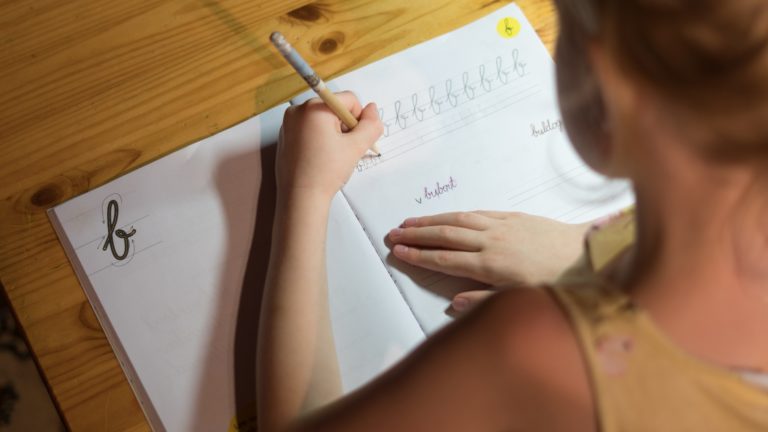
Handwriting often seems like a long-lost art. When I was in school, it was a class, just like spelling or reading. I practiced and practiced my letters, particularly when we got to cursive writing. I remember having to take home extra work to practice being neater in my work, and how important it was to my teacher that her students’ handwriting was nearly perfect.
Many parents today have similar stories of learning to write. Many of us remember writing notes and letters to people, like grandparents, friends, and relatives. I kept letters from my grandmother, written to me as a child. When I look at those letters, I treasure her handwriting as an art form, in addition to the words she wrote. To me, it is so personal to think of how, like our fingerprints, our handwriting is individually unique. We can often identify ourselves, not only by our words (or signature), but by the way we write them.
Today, many children use computers and smart phones, and fewer and fewer people are concerned about handwriting. Oftentimes, handwriting is less of a priority for school curriculum than reading, math, and science. Many children in today’s schools will never learn cursive, other than to read it.
However, hand-writing is still a very needed skill for our children to have. We use handwriting everyday for things like notes, messages, checks, job applications, and forms. And many children today are caught in a gap between rapid changes in technology and the lack of funding for this technology. So while they may be using smart phones and computers at home or in some classes, not all schools are able to provide computers to every student. In fact, few public schools have transitioned to this type of learning environment.
However, hand-writing is still a very needed As a result (and this is important), even though many children are not using handwriting consistently, their performance on tests and quizzes is measured in handwriting and fine motor skills. Most timed tests for math are done in writing. Most spelling tests are handwritten at the teacher’s pace. So, if your child struggles with handwriting, it could potentially mean that their test scores or performance are lower in other areas. Also, research has found that handwriting difficulties are also directly related to poor written expression skills, even in other modes, such as electronics. In addition, research has also found that children who practice handwriting often do better in terms of reading speed and reading comprehension. Finally, longitudinal studies show that children with poor fine motor coordination and handwriting are at higher risk for experiencing bullying and depression (Campbell, 2012).
For all of these reasons, it is important to watch your children’s handwriting, and address concerns as early as possible. If they are struggling, particularly in their early school years (or later), it is important to not just disregard them as “sloppy” or “messy” in their approach. Talk to their teacher. Gather information from other professionals, such as psychologists and occupational therapists. We are all there to help and guide you in decision-making for your child.
In our next blog post, we will talk more about handwriting delays, and common signs and symptoms of fine motor weaknesses.
Stay tuned…..
References
- Campbell, W. N., Missiuna, C., Vailancourt, T. (2012). Peer victimization and depression in children with and without Motor Coordination Difficulties. Psychology in the Schools, 49(4), 328-341.
- Crouch, A. and Jacubecy, J. (2007). Dysgraphia. How it affects a student’s performance and what can be done about it. Teaching Exceptional Children.
![]()
